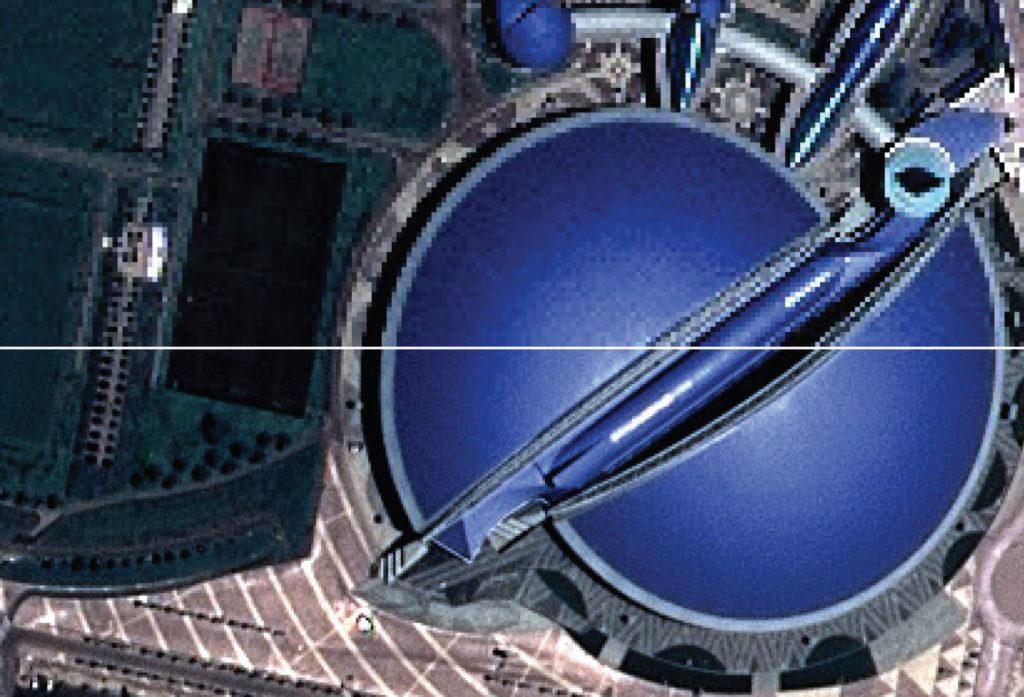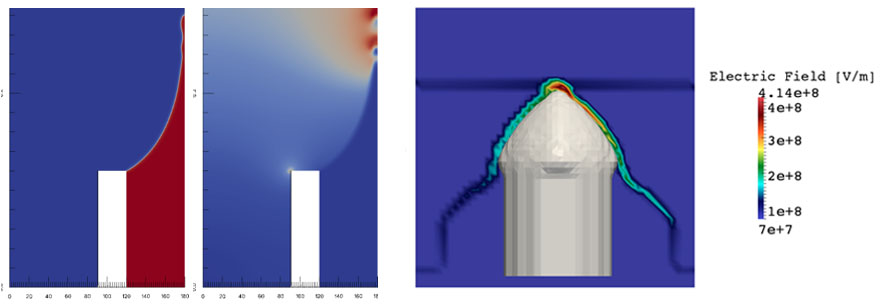
Our research
Our expertise encompasses the range of space environments, from hypersonic flight and re-entry, through Earth orbit, to interplanetary travel and robotic operations. Discover more about our research areas below:
Applications of orbital aerodynamics
Operating satellites at lower altitudes allows them to be smaller, less massive and less expensive, while achieving the same or even better resolution and data products than current platforms.
However, at reduced orbital altitude the residual atmosphere produces drag, which decreases the orbital lifetime. Aerodynamic perturbations also challenge the ability of the platform to remain stable with significant implications on mission operations.
Our research in this area is principally concerned with the development of novel geometries and system concepts that can operate effectively in this challenging environment.
The presence of the rarefied atmosphere in Very Low Earth Orbits (VLEO) also offers interesting opportunities for innovative attitude and orbital manoeuvres using aerodynamic forces and the prospect of revolutionary Atmosphere-Breathing Electric Propulsion (ABEP), which can enable sustained operations at these altitudes.

Low orbital altitude satellites enable high-resolution imaging
Fundamentals of orbital aerodynamics
Orbital aerodynamics is the study of the interactions of the residual atmosphere with orbital bodies. These gas flows are significantly different from traditional aerodynamics due to the flow regime and gas composition.
In free molecular flows, the atmosphere is so rarefied that intermolecular collisions are rare and aerodynamics is dominated by gas interactions directly with surfaces.
For orbital aerodynamics in low Earth orbits, this gas is predominantly atomic oxygen which adheres to traditionally used space materials producing drag.
We’re at the forefront of developments to identify and develop materials which specularly reflect the gas and, in combination with appropriate geometric design, can produce usable lift forces and either minimise or maximise the induced drag.
Our Rarefied Orbital Aerodynamics Research facility (ROAR) will generate a continuous flow of atomic oxygen at orbitals speeds enabling systematic characterisation of the gas surface interaction with materials. The performance of the materials will be validated on-orbit in 2020 on our Satellite for Orbital Aerodynamics Research (SOAR).

Re-entry experimentation, simulations and technologies
The design of spacecraft systems is a highly complex multidisciplinary problem that requires accurate prediction of gas flows. In turn, the description of high-speed flows past re-entry vehicles is based on very rich high-temperature thermodynamics up to 25,000K.
In these regimes, thermal excitation, radiative emission and absorption, ionisation and surface catalytic effects become important. Turbulisation of the flow also plays a crucial role in high-density atmosphere.
Our in-house computer codes can describe turbulent regimes (as well as chemically and thermodynamically equilibrium and non-equilibrium processes) past a re-entry vehicle. The developed software combines high-resolution computational algorithms with the possibility of resolving strong shock waves and consideration of real physical effects.
We use our long-duration hypersonic wind tunnel to examine fragmentation during re-entry and the aerodynamics of re-entry vehicles. And we have also developed non-intrusive flow diagnostics to quantify flow fields and understand the interaction between multiple bodies during a re-entry fragmentation event.
Prototype self-regulating heat shield for spacecraft re-entry
Space robotics
Space robotics is a multi-disciplinary field that unites key technology disciplines including robotics, computer science, space engineering and space science.
Alongside traditional scientific exploration of the solar system, there is an emerging market for commercialising space robotics for activities such as in-orbit servicing and asteroid mining, all of which involve the navigation of complex surface environments. Novel robotics technologies will enable new opportunities for the development of space exploration.
The next generation of autonomous explorers will need to break the mould of traditional designs in order to navigate complex, cluttered space environments. Inspired by animal locomotion, we aim to build systems that can crawl, climb, jump, fly and swim, and provide new and expanded capabilities for robotic explorers.

Prototype for lunar jumping robots, able to navigate complex planetary environments
Space system and mission analysis
Space-based systems are satellites or spacecraft working individually or together execute a mission in Earth orbit and beyond. These systems can range from individual small satellites to large constellations of spacecraft providing communications, navigation, or observation services.
These space systems are increasingly essential to our daily life on Earth but also invaluable in improving our knowledge of the universe and for exploring new worlds.
Our researchers perform integrated analysis of mission and system models to enable interdisciplinary design of space-based architectures and vehicles.
This approach allows us to analyse and optimise the ‘through-life’ design characteristics of our engineering systems.
Our space research at Manchester has principally focused on small satellites, including design of low-thrust characterisation missions; deployment of small satellite constellations; and analysis of deorbit methods and devices.
Spacecraft propulsion
Our spacecraft propulsion research focuses on electric propulsion technologies for small satellites and low thrust levels, including the development of novel thruster technologies, static thruster characterisation and in-orbit thrust characterisation.
We use a range of techniques from numerical modelling to experimental testing. We have facilities for testing small-scale electric propulsion systems in vacuum conditions.
We have also developed mission analysis tools for assessing propulsion requirements with a focus on nanosatellite missions and very low Earth orbit missions.

Electrospray propulsion in CFD: volume of fluid cone model – (left) fluid phases, (middle) electric field – OpenFoam, (right) Lattice Boltzmann PALABOS
Research outputs
We have a range of articles, conference contributions and other outputs that you can browse on the University’s Research Explorer.
Opportunities
Find out about research opportunities in Space Systems Engineering and how to apply.
Facilities
Explore our range of experimental facilities for Space Systems Engineering

